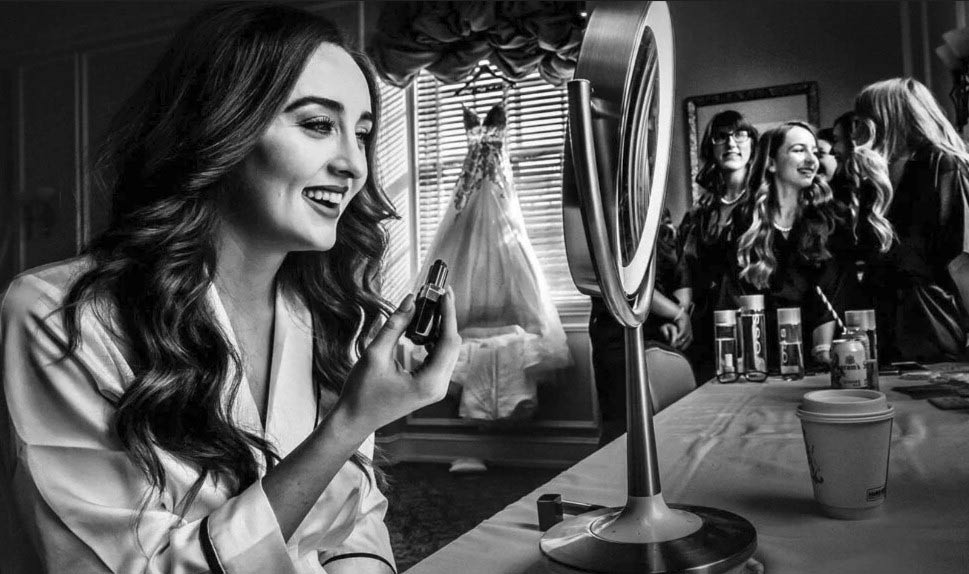Explore The Role of Photography in Storytelling Across Media. Discover the evolution and The Power of Visuals in Storytelling art.
In a world saturated with information, the ability to tell compelling stories is more crucial than ever. With its power to capture moments and evoke emotions, photography plays a pivotal role in storytelling.
This article delves into The Importance of Storytelling in photography, exploring The Evolution of Photography in Storytelling, The Power of Visuals in Storytelling, key elements, The Future of Photography in Storytelling and the impact across various fields.
Types of Storytelling Through Photography
The Role of Photography in Storytelling tells stories in unique ways. Each photo captures a moment, an emotion, a piece of history. Different types of photography tell these stories differently. Let’s explore how.
Photojournalism: Capturing Reality

Photojournalism involves documenting real events and telling stories through news photography. Photojournalists capture moments that define historical events, offering a visual account of newsworthy occurrences. Their work often brings attention to social issues and human experiences that might otherwise go unnoticed.
Photojournalism reveals truths about the world. It shows real events as they unfold. Photographers in this field capture news, sports, and daily life. Their work often appears in newspapers and magazines.
- Authenticity is key in photojournalism. The photos must be truthful.
- Images often Spark Change by showing powerful events.
- Photojournalists follow a Code of Ethics. They maintain the integrity of the captured scene.
Conceptual Photography: Crafting Narratives

Conceptual photography uses images to tell a story. Here, photographers create scenes to express ideas. They use symbols, creative settings, and often edit photos to craft the narrative.
| Features | Benefits |
| Symbolism | Conveys deeper meanings. |
| Creative Freedom | Photographers express their vision. |
| Emotional Impact | Engages viewers on a personal level. |
The Role of Photography in Storytelling
Conceptual photos can be abstract or direct. They make viewers think and feel. They invite viewers into the photographer’s world.
Documentary Photography
Documentary photography focuses on long-term projects that tell deep, investigative stories. Photographers spend extended periods with their subjects, comprehensively capturing their lives and experiences. This type of storytelling often highlights underrepresented communities and social issues.
Street Photography
Street Photography captures candid moments in public spaces. It offers a glimpse into everyday life and the spontaneous interactions that occur in urban environments. Street photographers use their keen observation skills to find stories in the ordinary, turning mundane scenes into compelling narratives.
Portrait Photography
Portrait photography tells personal stories through images of individuals. A well-executed portrait can reveal a person’s character, emotions, and experiences. Portrait photographers often build a rapport with their subjects to capture authentic and expressive images.
Fine Art Photography
Fine art photography uses the medium as an artistic tool to convey abstract stories and concepts. These photographers often experiment with composition, lighting, and post-processing to create images that provoke thought and evoke emotions. Fine art photography blurs the line between reality and imagination.
The Evolution of Photography in Storytelling
In today’s digital age, with images being shared globally in seconds, the role of photography in storytelling has become even more significant, providing a platform for voices to be heard and stories to be seen.
Historical Background
Early Days of Photography

Early photographs in the 1820s, were rare and unique. They took long exposure times. People saw them as curiosities. These first images were more about science than storytelling.
Evolution into A Storytelling Medium
Photography has come a long way since its inception in the early 19th century. The first photograph by Joseph Nicéphore Niépce marked the beginning of a new era in visual documentation.
Early photographers used their craft to document historical events, explore new lands, and capture the essence of everyday life. These early images laid the foundation for photography as a storytelling medium.
Photography quickly turned into an art. It captured life, emotion, and history. Photographers became storytellers. They showed truths and crafted narratives. Their images led to change and understanding across cultures.
- Camera technology improved
- Photography became more accessible
- Visual storytelling evolved
Photos now travel instantly across the globe. They spark conversations and inspire action. Photography remains a powerful tool in storytelling.
Technological Advancements
The evolution of camera technology has significantly enhanced the ability to tell stories through photographs. From the bulky, slow processes of daguerreotypes to the convenience of modern digital cameras, each technological leap has expanded the possibilities for photographers.
Innovations such as color photography, autofocus, and high-resolution sensors have allowed for greater creative expression and more detailed storytelling.
Digital Era

The advent of digital photography and social media has revolutionized storytelling. Digital cameras and smartphones have made photography accessible to everyone, democratizing the art form.
Platforms like Instagram, Facebook, and Pinterest enable photographers to share their stories with a global audience instantly. This shift has transformed photography from a niche art form into a ubiquitous method of communication.
The Power of Visuals in Storytelling
The Power of Visuals in Storytelling, captures moments and tells stories without words. Visuals quickly communicate complex ideas. A single photo can convey emotions and narratives to viewers instantly. This power makes photography essential in storytelling.
The Science Behind Visual Memory

The Power of Visuals in Storytelling, Visuals trigger stronger recall than words. When we see images, our brain encodes them as memorable data. This process is known as the Pictorial Superiority Effect.
- Visuals are processed 60,000 times faster than text.
- People remember 80% of what they see compared to 20% of what they read.
- The saying “a picture is worth a thousand words”
- Images help us remember and understand information better.
Emotional Connection & Impact of Images

In The Power of Visuals in Storytelling, Photographs have a unique ability to evoke emotions. A single image can capture joy, sorrow, anger, or love, creating an instant connection with the viewer.
This emotional resonance is why visual stories often have a more profound impact than text-based narratives. For example, a photograph of a refugee child can convey the gravity of a humanitarian crisis more powerfully than words alone. Emotions drive human behavior, making images potent tools for storytelling.
Images with emotional content keep viewers engaged. They tell a story that resonates with their personal experiences.
| Emotion | Image Type | Effect |
| Happiness | Bright, warm colors | Positive engagement |
| Sadness | Desaturated, blue tones | Empathy and reflection |
| Surprise | High contrast, unexpected elements | Attention grabbing |
Universal Language

One of the most remarkable aspects of photography is its universality. Unlike written or spoken language, photographs do not require translation.
They can be understood by people from different cultures and backgrounds, making photography a powerful tool for cross-cultural communication. This universality allows photographers to tell stories that resonate on a global scale.
Memorable Impact

Visual stories are often more memorable than their text-based counterparts. The human brain processes images faster than text, and visual information is more likely to be retained.
This makes photography an effective medium for creating lasting impressions. Iconic images, such as those from historical events or major news stories, often become etched in our collective memory.
Key Elements: The Importance of Storytelling in Photography
Photography tells stories without words. A single image can unfold a narrative, evoke emotions, and capture the essence of a moment. The power of a photographic narrative lies in its elements. These elements guide the viewer through the story the photographer intends to tell.
Let’s explore the core aspects that make a photographic story truly compelling.
Choosing The Right Subject
Choosing the right subject matter is essential for storytelling. The subject of a photograph should be compelling and relevant to the narrative. Whether it’s a person, a landscape, or an object, the subject should contribute meaningfully to the story being told. Photographers often look for subjects that evoke curiosity or empathy.
Capturing the Right Moment
Capturing the right moment is key to effective storytelling. Henri Cartier-Bresson, a pioneer of street photography, coined the term “the decisive moment” to describe the precise instant when the elements of a scene come together to create a meaningful image. This concept underscores the importance of timing in photography.
Composition and Framing
Composition shapes how viewers see an image. It directs their eyes to the story’s heart. Framing acts like a stage for this visual tale. The photographer decides what stays in the frame and what doesn’t. This choice is crucial. Key composition techniques include:
- Rule of Thirds: Divides the frame for balance.
- Leading Lines: Directs the eye to the subject.
- Frame within a Frame: Adds depth to the story.
Composition is crucial in creating compelling photographic stories. Elements such as framing, perspective, and the rule of thirds can guide the viewer’s eye and enhance the narrative. A well-composed photograph can tell a story more effectively by highlighting the subject and creating a sense of balance and harmony.
Lighting and Mood
Lighting is the soul of photography. It can change a scene’s mood instantly. Soft light creates a calm, intimate feel. Harsh light intensifies emotions. Colors in lighting enhance narratives.
| Lighting Type | Mood Conveyed |
| Soft/Diffused | Gentle, Soothing |
| Harsh/Direct | Strong, Dramatic |
| Warm | Inviting, Cozy |
| Cool | Distant, Mysterious |
Lighting plays a significant role in setting the mood and tone of a photograph. Natural light, artificial light, and the interplay of shadows can all influence how a story is perceived. For instance, soft, diffused lighting might convey a serene, peaceful scene, while harsh, direct light can create a sense of drama and intensity.
Post-Processing and Editing
Post-processing and editing are integral to photographic storytelling. Editing can enhance the visual appeal of a photograph and emphasize key elements of the story. However, it is important to maintain ethical standards and avoid manipulating images in ways that mislead or distort the truth.
Context
The background and surrounding elements provide context, adding depth and meaning to the main subject.
The Future of Photography in Storytelling
The Future of Photography in Storytelling is Bright! Photography tells stories in ways words cannot. It captures moments, emotions, and messages. As we look ahead, photography’s role in storytelling is set to evolve remarkably. Let’s explore what the future holds.
Technological Advancements
High-quality cameras are becoming more accessible, and software advancements are making editing more powerful.
- Camera Technology is advancing rapidly. Soon, photographers will use gear that can see beyond human eyes.
- Drones will provide unique perspectives.
- Virtual reality will immerse viewers in the story. These tools will enhance how we tell and experience stories.
Sustainability of Visual Narratives
Visual stories are timeless. They stay relevant for years. With digital platforms, photos reach wider audiences. This makes storytelling through photography sustainable and impactful.
Interactive and Immersive experiences (VR/AR)
Interactive and immersive experiences (VR/AR) in storytelling use virtual and augmented reality technologies to create engaging visual narratives.
These technologies enhance photography by allowing audiences to explore and interact with stories in a more dynamic, lifelike manner, deepening emotional connections and providing a more compelling storytelling experience.
The Rise of Smartphone Photography
Smartphone photography revolutionizes storytelling by making high-quality image capture accessible to all. It impacts social media, journalism, and personal narratives, enabling everyone to create and share compelling visual stories anytime, anywhere. With the improvement of smartphone cameras, more people can participate in photography, democratizing the art form.
Education and Awareness
Photography is a powerful tool for education and raising awareness about social issues. Nonprofit organizations and activists use images to highlight causes, inspire action, and educate the public. Visual stories can bring attention to critical issues such as poverty, climate change, and human rights.
Media and Journalism
The Future of Photography in Storytelling plays a vital role in media and journalism. News outlets rely on powerful images to accompany their stories, providing visual evidence of events and adding depth to their reporting. Photographs in journalism help to capture the public’s attention and convey the urgency of current events.
Advertising and Marketing
In advertising and marketing, photography is used to tell brand stories and engage consumers. High-quality images can showcase products, evoke emotions, and create a connection with the target audience. Effective visual storytelling in advertising can differentiate a brand and drive consumer action.
Social Media
Social media platforms have become hubs for visual storytelling. Instagram, in particular, is a platform where photographers and influencers share their stories through images and captions.
The visual nature of social media makes it an ideal medium for storytelling, enabling users to share their lives, experiences, and creative works with a global audience. Platforms like Instagram and Pinterest are making it easier to share stories through images, reaching a global audience.
Other Platforms and Mediums
The Future of Photography in Storytelling is enriched through various platforms and mediums, each offering unique ways to convey narratives:
- Digital Media: Websites, blogs, and e-books provide interactive and easily accessible formats for sharing stories. Multimedia elements such as videos, images, and hyperlinks enhance the narrative experience.
- Print Media: Magazines, newspapers, and books offer a traditional, tactile experience. Print allows for in-depth exploration of stories through detailed articles, photographs, and illustrations.
- Podcasts: Audio narratives create immersive experiences through sound. Storytellers can use voice modulation, background music, and sound effects to captivate listeners and convey emotions.
- Film and TV: Visual storytelling through movies, documentaries, and TV shows combines dialogue, imagery, and sound to create powerful narratives. These mediums offer a cinematic experience that can deeply engage viewers.
- Art Exhibitions: Gallery displays allow for storytelling through visual art. Paintings, sculptures, and photographs can convey complex stories and emotions, providing a contemplative experience for viewers.

- Documentaries: Visual narratives. Documentary photography is a powerful medium for storytelling that captures real events, people, and places to convey a compelling narrative. This genre focuses on providing an authentic and truthful representation of the subject, often highlighting social, political, or cultural issues. Here are key aspects of documentaries in photography for storytelling:
- New Apps: In The Future of Photography in Storytelling, Expect New Apps that blend photos with other forms of storytelling. New apps are transforming storytelling in photography by enhancing creativity and audience engagement.

Apps like Adobe Lightroom and VSCO offer advanced editing tools and creative filters, allowing photographers to refine their images.
Instagram Stories and Reels enable the creation and sharing of short, engaging photo and video stories with interactive elements. Apps like Steller and Unfold provide templates for visually appealing photo stories.
Each platform and medium has its strengths, allowing storytellers to choose the best format to reach and resonate with their audience.
The Ethical Dimension: The Role of Photography in Storytelling
Truth and Manipulation

Ethical considerations are paramount in photographic storytelling. Photographers must balance artistic expression with factual representation. Manipulating images to the extent that they mislead viewers undermines the integrity of the story. Ethical storytelling requires honesty and a commitment to truth.
Consent and Privacy
Photographers must obtain consent when photographing individuals, particularly in sensitive situations. Respecting privacy and ensuring that subjects are aware of how their images will be used is crucial.
This is especially important in vulnerable communities where individuals may not fully understand the implications of being photographed.
Cultural Sensitivity

Cultural sensitivity is essential in photographic storytelling. Photographers should respect the cultural contexts of their subjects and avoid stereotypes or misrepresentations. Understanding and honoring cultural differences enhances the authenticity and ethical standards of storytelling.
Frequently Asked Questions
How do Photographs Play an Important Role in Storytelling?
Photographs capture emotions and details, making stories vivid and relatable. They engage viewers instantly, providing a visual context that words alone may not convey. This visual storytelling can evoke stronger reactions, helping messages resonate deeply with audiences.
How does photography enhance storytelling?
Photography enhances storytelling by providing visual context and details that complement the narrative. It can highlight key moments, illustrate settings, and portray characters’ emotions, making the story more engaging and memorable.
What elements make a photograph effective in storytelling?
Effective storytelling photographs typically have strong composition, clear focus on the subject, compelling lighting, and an ability to evoke emotion. Elements like candid moments, dynamic action, and meaningful context also contribute to their impact.
Can a single photograph tell a complete story?
Yes, a single photograph can tell a complete story if it captures a moment that includes enough context and emotion to convey a narrative. Iconic images often encapsulate powerful stories within a single frame, leaving a lasting impression.
What Is the Relationship Between Photography and Storytelling?
Photography captures moments, telling stories without words. It bridges emotions and experiences, making stories visually compelling. Through images, photographers narrate tales, evoking feelings and conveying messages.
This visual storytelling enhances narratives, connecting viewers to the essence of the story. Photography and storytelling together create powerful, memorable experiences.
How Can Photography Be Used to Tell a Story?
Photography captures moments, emotions, and narratives through visual composition, effectively conveying a story without words. It freezes time, allowing viewers to explore and interpret the captured scenario, creating a connection and understanding of the subject’s journey or message.
What Is the Storytelling Power of Photography?
The storytelling power of photography lies in its ability to capture emotions, convey narratives, and immortalize moments without the need for words. It bridges cultural gaps and speaks universally.
What types of stories are best told through photography?
Stories that are visual in nature, such as travel experiences, human interest pieces, cultural events, and personal milestones, are best told through photography. Visual storytelling also greatly benefits photojournalism, documentary photography, and lifestyle stories.
How can photographers develop a narrative through their images?
Photographers can develop a narrative by planning a sequence of images that follow a logical or emotional progression. This can include establishing shots, close-ups, and action shots that together tell a cohesive story, capturing the narrative’s beginning, middle, and end.
What is the role of context in photographic storytelling?
Context is crucial in photographic storytelling as it provides background information that helps viewers understand the significance of the images. Including contextual details like location, time, and cultural or social background can deepen the viewer’s understanding of the story.
What are some common themes in storytelling photography?
Common themes in storytelling photography include love, loss, joy, struggle, adventure, and triumph. Themes often reflect universal human experiences, making them relatable and compelling to a broad audience.
How does photojournalism utilize storytelling?
Photojournalism utilizes storytelling by documenting real-life events and situations with honesty and integrity. Photojournalists aim to capture the essence of news stories through images that convey the facts and emotions of the moment, providing visual reports that complement written articles.
How do emotions play a role in storytelling photography?
Emotions play a central role in storytelling photography by creating a connection between the subject and the viewer. Capturing genuine expressions and moments of emotional intensity can make the story more relatable and impactful.
What techniques can enhance storytelling in photography?
Techniques that enhance storytelling in photography include using varied angles and perspectives, playing with light and shadow, incorporating movement, and focusing on details that reveal more about the story. Post-processing can also be used to emphasize certain elements.
How important is sequencing in photographic storytelling?
Sequencing is very important in photographic storytelling as it arranges images in a way that guides the viewer through the narrative. A well-thought-out sequence can build tension, provide clarity, and lead to a satisfying conclusion.
What is the role of candid photography in storytelling?
Candid photography plays a significant role in storytelling by capturing unposed, spontaneous moments that reveal genuine emotions and interactions. These candid shots add authenticity and relatability to the story.
How can photographers use symbolism in their storytelling?
Photographers can use symbolism by including objects, colors, or scenes that represent broader ideas or themes. Symbolic elements can add layers of meaning to the story and invite viewers to interpret the images on a deeper level.
How does cultural context influence photographic storytelling?
Cultural context influences photographic storytelling by shaping the way stories are perceived and understood. Photographers need to be aware of cultural symbols, practices, and values to ensure their stories are respectful, accurate, and resonant with diverse audiences.
Can photography be used to tell fictional stories?
Yes, photography can be used to tell fictional stories through staged or conceptual photography. Photographers create scenes, use models or actors, and employ props and settings to craft a narrative that communicates fictional tales.
What is the impact of technology on storytelling in photography?
Technology has greatly impacted storytelling in photography by providing advanced tools for capturing, editing, and sharing images. Innovations like drones, 360-degree cameras, and AI-driven editing software have expanded the possibilities for creating and presenting photographic stories.
How can storytelling photography be used in marketing and branding?
Storytelling photography can be used in marketing and branding to create compelling narratives that resonate with target audiences. By telling stories through images, brands can convey their values, connect emotionally with consumers, and differentiate themselves in the marketplace.
What ethical considerations should photographers keep in mind when telling stories through images?
Ethical considerations in The Role of Photography in Storytelling, include obtaining consent from subjects, avoiding exploitation, representing subjects truthfully, and being mindful of cultural sensitivities. Photographers should strive to tell stories with integrity and respect for their subjects.
How can aspiring photographers improve their storytelling skills?
Aspiring photographers can improve their storytelling skills by studying the work of experienced storytellers, practicing regularly, seeking feedback, and learning about narrative techniques. Engaging in diverse projects and exploring different genres can also help refine their ability to tell compelling stories through photography.
Conclusion
The Role of Photography in Storytelling, transcends mere visual appeal, weaving intricate tales through images. It captures emotions, preserves moments, and communicates stories without words.
As a powerful storytelling tool, The Role of Photography in Storytelling, invites viewers into diverse worlds, fostering empathy and understanding. Let’s embrace the narrative potential of photography to share and connect with the stories around us.







Leave a Review